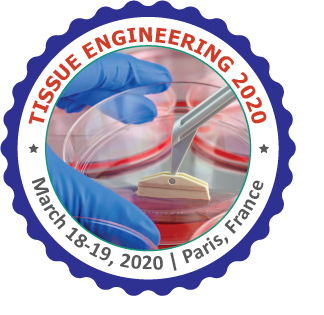
Brossard C
Institute of Radioprotection and Nuclear Safety, France
Title: Cellular therapy treatment of chronic radiation cystitis in rats
Biography
Biography: Brossard C
Abstract
Introduction: Chronic radiocystitis (CRC) is a consecutive pathology of pelvic irradiation. It is characterized by chronic inflammation sometimes progressing to fibrosis with symptoms such as pain and bleeding. There is no effective treatment and we propose to test mesenchymal stem cells (MSCs) as a new therapeutic method. Our previous studies on radiation rectitis have shown that MSCs can reverse chronic inflammation and fibrosis after irradiation.
Material and methods: Preclinical modelling of CRC in rats was implemented by localized irradiation guided by scanner imaging of the bladder from 20 to 40 Gray with a follow-up of 3 to 6 months post-irradiation. Gene and protein expression analyses as well as histological and functional parameters are carried out.
Results and Statistical Analysis: The analysis of urinary parameters revealed transient hematuria but no decrease in urinary volume over the 6 months. Transcriptomic analysis indicates a profile of chronic inflammation (IL1β, CCL2, IL6) and hypoxia (HIF1α) at 6 months. Histological observations reveal a disorganization of urothelium at 6 months, with a decrease in its thickness and vascular lesions, which is consistent with gene expression results.
Conclusion: These initial results attest to the relevance of the study by showing an initiation of CRC at 6 months with chronic inflammation, signs of hypoxia, hematuria and urothelium disorganization. The analysis of kinetics over later times will make it possible to characterize the evolution towards fibrosis and to have an established CRC. In a second step we will set up the treatment of this pathology by cell therapy.

